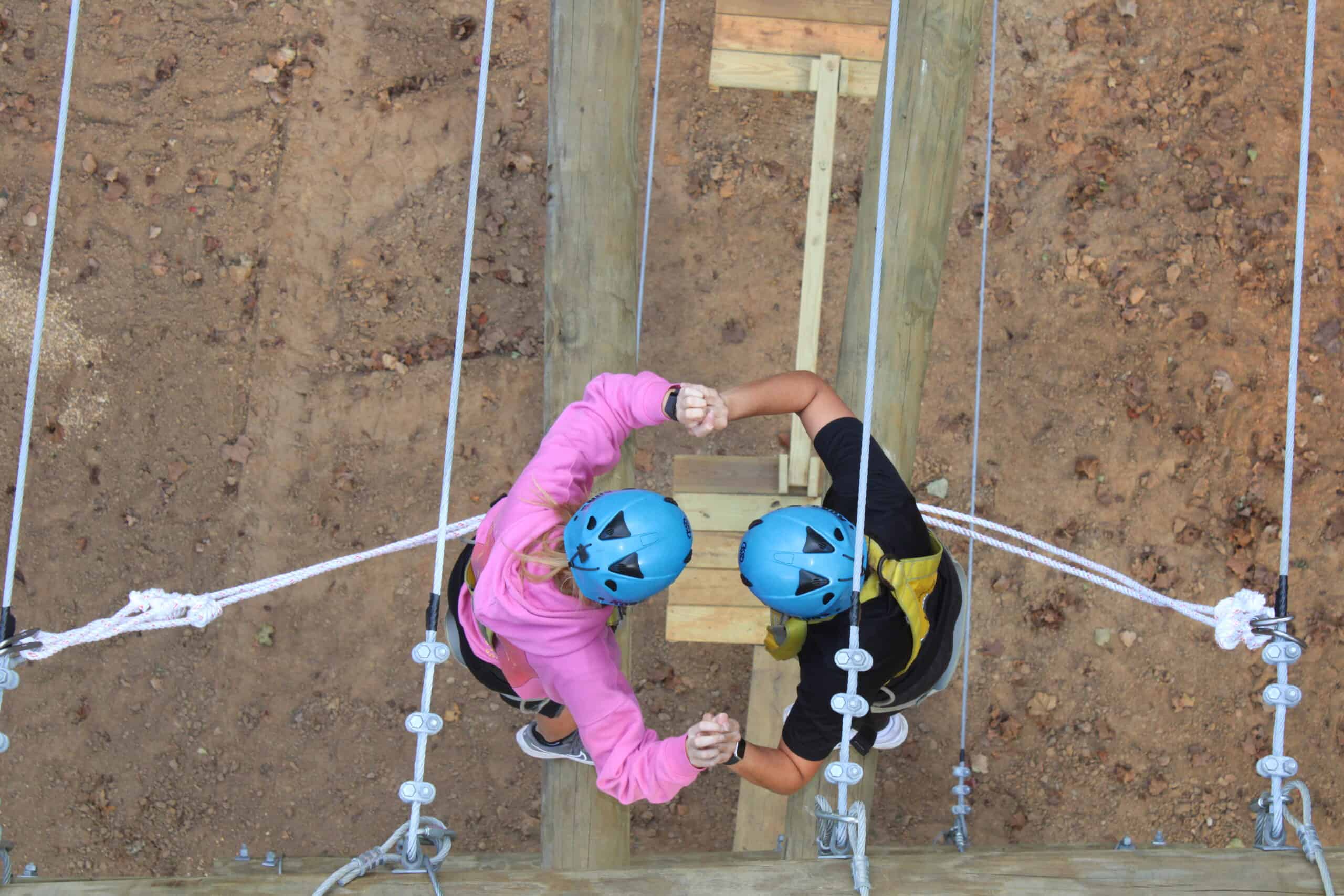Immerse Your Team in a Dynamic Obstacle Program Experience for Development and Unity
In the realm of team advancement and cohesion, the application of dynamic obstacle programs has emerged as an engaging technique to foster development and unity among team participants. As groups deal with these tests together, they are often challenged with the opportunity to uncover untapped potential, grow bonds, and uncover brand-new strategies for functioning collectively towards usual goals.
Advantages of Dynamic Challenge Courses
Taking part in dynamic obstacle training courses offers teams a hands-on chance to create essential communication and analytic abilities in a physically engaging atmosphere. These programs give an unique setting where staff member are encountered with numerous barriers that call for collaboration, effective communication, and quick decision-making to get rid of. By taking part in tasks such as high ropes training courses, group structure video games, and problem-solving challenges, participants are pushed out of their comfort zones, fostering personal and team growth.
One significant benefit of dynamic challenge courses is the enhancement of interaction abilities within groups. Via encountering difficulties with each other, team members learn to communicate better, listen proactively, and give clear guidelines to one an additional. These experiences equate directly into the office, boosting general team effort and efficiency. Additionally, these training courses advertise analytical skills by requiring groups to believe critically, strategize, and adjust to altering circumstances on the spot. This capacity to fix issues efficiently under stress is a useful asset in any kind of professional setting. Generally, vibrant obstacle courses offer an alternative technique to group development, integrating exercise with skill-building to advertise unity and growth.
Group Building With Barrier Navigation
Browsing obstacles as a team offers a distinct possibility for fostering partnership and reinforcing interpersonal connections within a team. The procedure of conquering difficulties with each other requires effective interaction, trust fund, and mutual support. Challenge navigation on a vibrant obstacle training course encourages employee to depend on each various other's strengths, analytical capabilities, and strength. By challenging mental and physical hurdles as a cohesive system, team participants find out to utilize specific abilities for the collective benefit of the group.

Enhancing Communication Abilities and Count On
Structure upon the foundation of strengthened social relationships developed through overcoming challenges as a team, the focus currently moves in the direction of improving interaction skills and cultivating count on within the team dynamic. Effective interaction is important for making certain that team participants understand each various other's perspectives, techniques, and objectives. By participating in activities that need succinct and clear interaction, such as navigating a difficulty training course blindfolded or addressing a problem with restricted spoken signs, employee can practice active listening and efficient expression of concepts.
Trust fund is an additional essential aspect in group characteristics. Trusting your colleagues suggests relying on their abilities, objectives, and dependability. With collective difficulties that demand a high degree of trust fund, such as a trust fall or a ropes course where employee rely on each other for safety, individuals learn to let go of worry and question, promoting a sense of unity and cohesion within the team. By honing communication abilities and constructing trust fund, groups can attain higher synergy and efficiency.
Cultivating Friendship and Unity
Unity among team members is the foundation of a cohesive and strong group dynamic, necessary for attaining common objectives and fostering a sense of camaraderie. Promoting friendship within a group can be attained via numerous tasks throughout a vibrant challenge training course experience. By getting involved in obstacles that require cooperation and coordination, team members develop a much deeper link and understanding of one another, leading to a strong sense of unity.

Methods for Long-Term Team Growth
By defining details targets, team participants can align their initiatives towards an usual purpose, cultivating motivation and responsibility. Encouraging open dialogue, giving constructive responses, and actively listening to group members can improve collaboration and count on within the team.
Additionally, purchasing continuous discovering and growth opportunities can assist staff member obtain brand-new abilities, stay engaged, and adjust to evolving difficulties. Whether via next training programs, workshops, or mentorship initiatives, offering opportunities for individual and professional development can add to the team's overall success. Furthermore, identifying and commemorating achievements, both tiny and large, can boost morale and strengthen a positive group society. By applying these strategies regularly, teams can navigate barriers, embrace adjustment, and prosper over time.

Verdict
In final thought, dynamic challenge training courses use various benefits for group development and unity. These experiences offer a platform for lasting group development and development, leading to a much more reliable and cohesive group dynamic.
In the home world of team growth and communication, the utilization of vibrant difficulty courses has actually emerged as a compelling technique to foster development and unity among group participants. By engaging in tasks such as high ropes courses, group building video games, and analytical challenges, individuals are pushed out of their convenience zones, cultivating personal and group growth.
In significance, team structure through barrier navigation is a reliable way to grow an interconnected and encouraging team dynamic.
